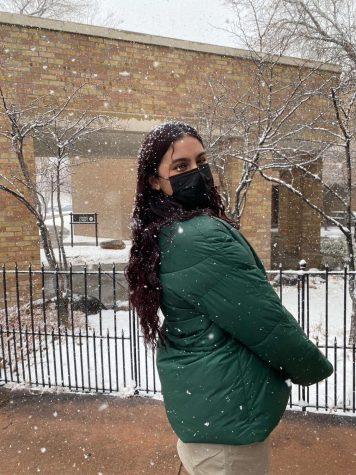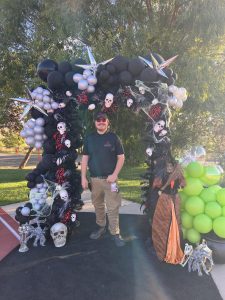Beyond the Candy: A Brief History of Halloween
November 1, 2019
Halloween is a holiday of contradictions. It is the one night of the year when we confront our fear of death. Houses are adorned with tombstones, ghosts, bats, and many more decorations that would be considered malicious at any other time of the year. At the same time, children dress up and plead for candy at houses all over the country. Of all the holidays, Halloween is the most misunderstood. The history of Halloween is the opposite of the childish traditions we enact today.
The origins of Halloween can be attributed to the Celts, an ancient tribe that was located in modern-day Britain. On October 31, the Celts held a harvest festival called Samain. Samain was meant to mark the beginning of winter, as it loosely translates to “summer’s end.” Samain was the ancient transition from light to dark. It was said to be the one night a year when the bridge of life and death was opened. Spirits could wander out, and humans could travel to the otherworld. Stories claim that many saw the dead return and that people simply vanished. The bonfires drew bats, an iconic symbol of Halloween even today. Many cultures have celebrated the dead in festivals near the beginning of winter, as it is seen as the time that dark begins to emerge. Some of these ancient traditions survived through an unlikely ally — Christianity. Many church officials attempted to convert Pagans. To do so, they began to adopt pagan traditions. Lemuria was an example of this. Lemuria was a festival on May 13th that initiated a crossover from the worlds of the living and dead. Ghosts of the dead would emerge and haunt people for one night. The church converted this tradition into All Saints Day. All Saints Day was meant to commemorate the pious dead. They moved this holiday to November 1st, the day following Samain. Samain was dubbed All Hallows Evening, then shortened to All Hallows Eve. This name eventually became Halloween. In order to celebrate all souls, November 2nd was named All Soul’s Day. The tradition of trick or treating comes from November 2nd. Priests would tell people to pray for souls who were stuck in between heaven and hell. If enough prayers were enacted, the souls could move on to heaven. This lead to the medieval custom called “souling”. Children would go door to door to beg for “soul cakes,” a concoction made with spices and raisins. Eventually, this custom would morph in modern times to our current tradition of asking for candy.
Halloween or All Hallow’s Evening was never a tradition for children. It was meant to be a day honoring the dead and the beginning of winter. Over time, our culture has simplified and sweetened this ancient ritual. Today, hardly any know the cryptic past of a child’s favorite holiday.









Dara Johnson • Nov 1, 2019 at 10:09 am
I loved this article about the history of Halloween! My kids and I were just talking last night about how we really had no idea where the tradition of trick or treating came from, and then this helpful article showed up in my inbox this morning. Thanks for brief, helpful history!
-Ms. Johnson